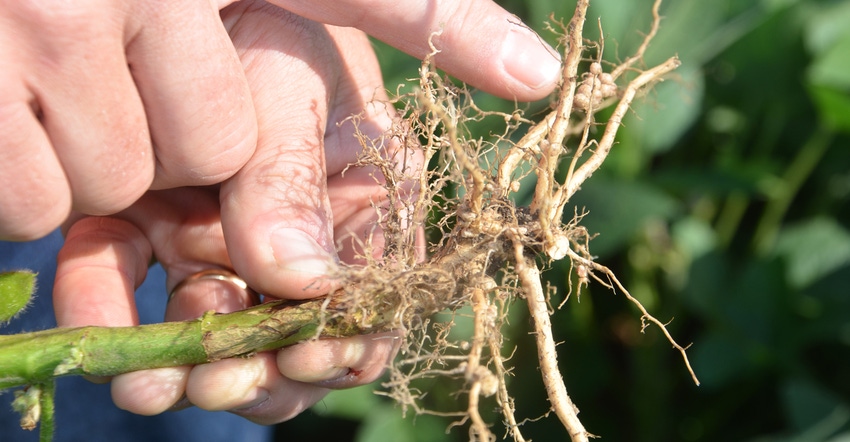
Steve Gauck has a theory. He can’t prove it, and not all agronomists agree with him. But he’s happy to accompany you to the field and look for examples that help prove his point.
What’s the theory? It’s simply that if you plant soybeans a touch deeper than you likely did in the past, you will encourage rooting slightly deeper in the soil. When roots are 2 to 3 inches under the surface instead of right near the top, they’re more likely to host more nodules containing helpful bacteria, which pull nitrogen out of the air and provide it to the plant. Gauck’s goal is planting soybeans at least 1.5 inches deep.
“I’ve seen it before, and I was able to demonstrate it again this year on roots in the field we’re watching,” says Gauck, a sales agronomist for Beck’s, based near Greensburg, Ind. Beck’s sponsors Soybean Watch ’19.
“We dug up a few plants of two different varieties in August,” he says. “One variety was in the R3 reproductive stage, beginning to form pods in the uppermost nodes. The other variety was just entering the R3 stage, running about five days behind on maturity. That difference was simply due to genetics.”
Nodule check
In both cases, Gauck was pleased at what he saw below the surface. “There were healthy nodules on all the plants we dug up,” he says. “The farther below the soil line I looked, the more numerous nodules seemed to be.”
Gauck is convinced that’s not an accident. “The soil is cooler even 2 to 3 inches below the surface than it is right at the surface,” he explains. “The bacteria work best in somewhat cooler conditions, when it’s not overly hot. This was a no-till field, so residue on the surface helped keep the soil somewhat cooler. The surface was also completely covered by leaf canopy, which is what we want. The net result was dark green, healthy soybeans heading into the key part of the season for yield.”
Whether the field receives enough moisture will play a big role in determining final yield outcome, Gauck acknowledges. Residue on the surface will help it make the most of the moisture it receives. Nodules continuing to work and produce nitrogen for the plant as long as possible is also a key factor.
Gauck knew these nodules were active because they were pink inside, almost the color of rare steak when squeezed. “That indicates bacteria are still active, producing nitrogen,” he says. “If they’re gray or brown inside, bacteria are no longer actively producing nitrogen.”
There were numerous nodules on roots even though the soil was hard, Gauck adds. “It was hard to dig up plants, even with a shovel,” he notes. “But when you uncovered the roots, the nodules were there.”
Why would the soil be hard? It was a no-till field and wasn’t planted wet, just planted late. “Even hard rains can cause soil compaction and hard soil,” Gauck says. “We had plenty of those this spring.”
About the Author(s)
You May Also Like




